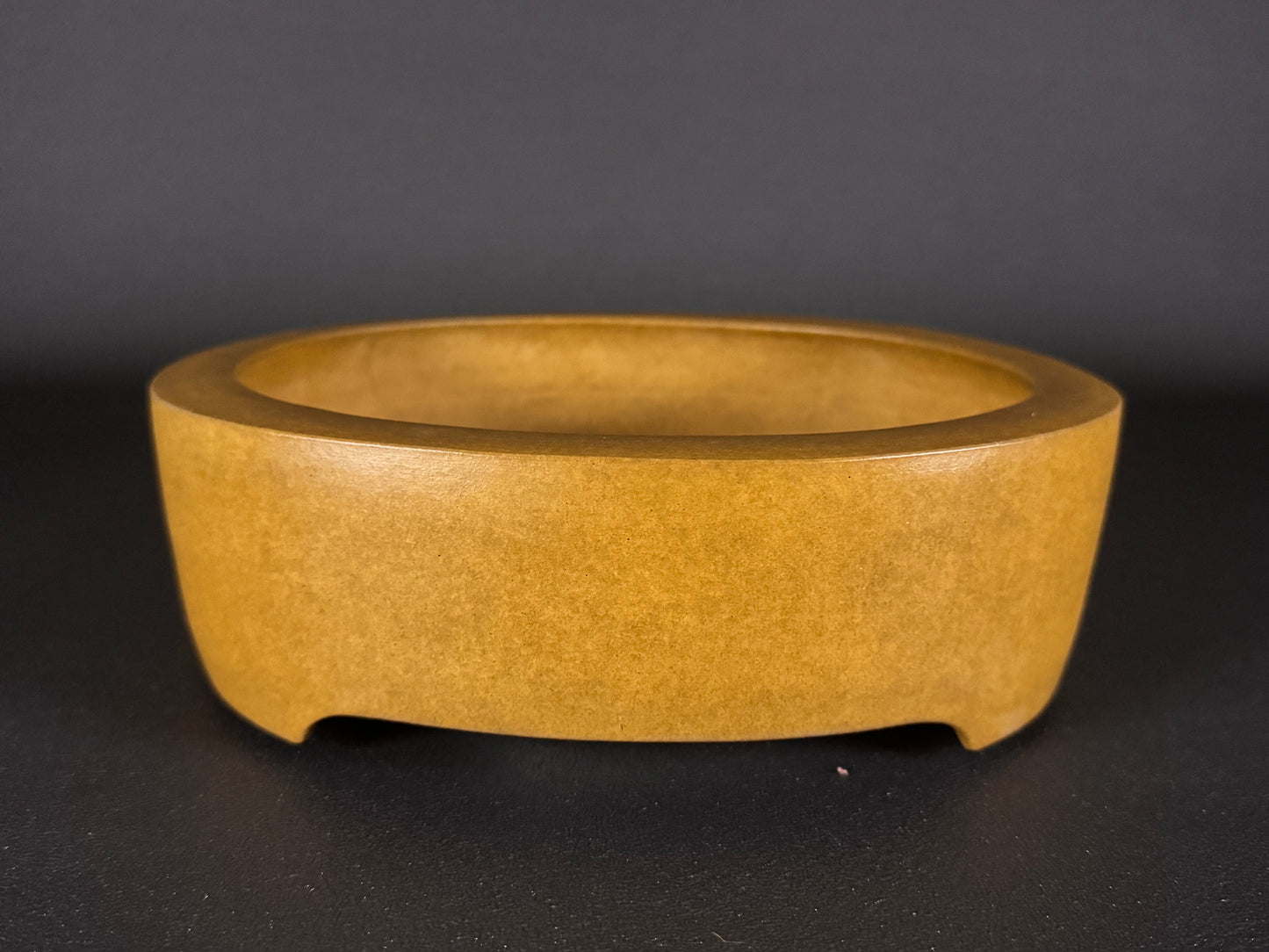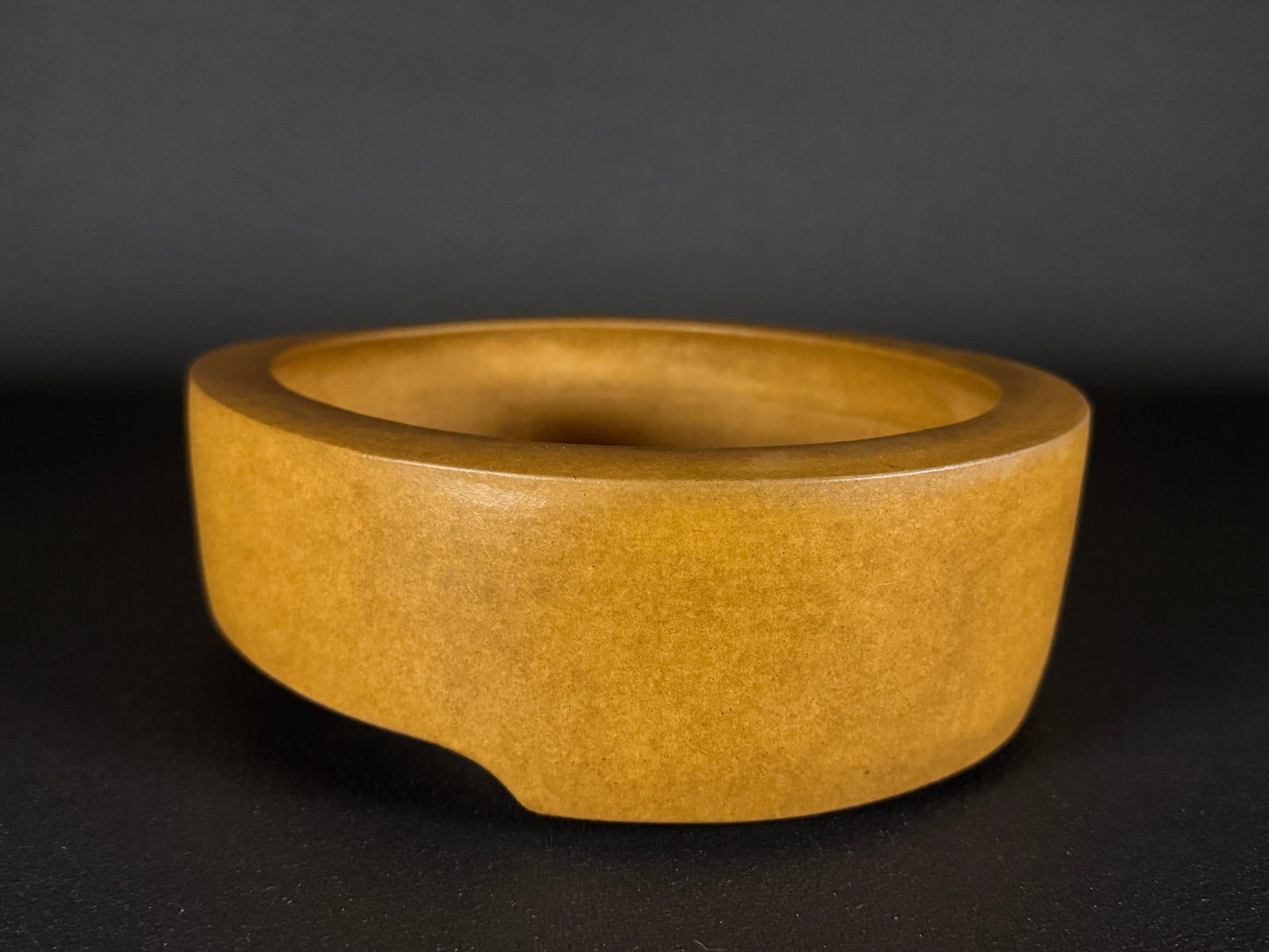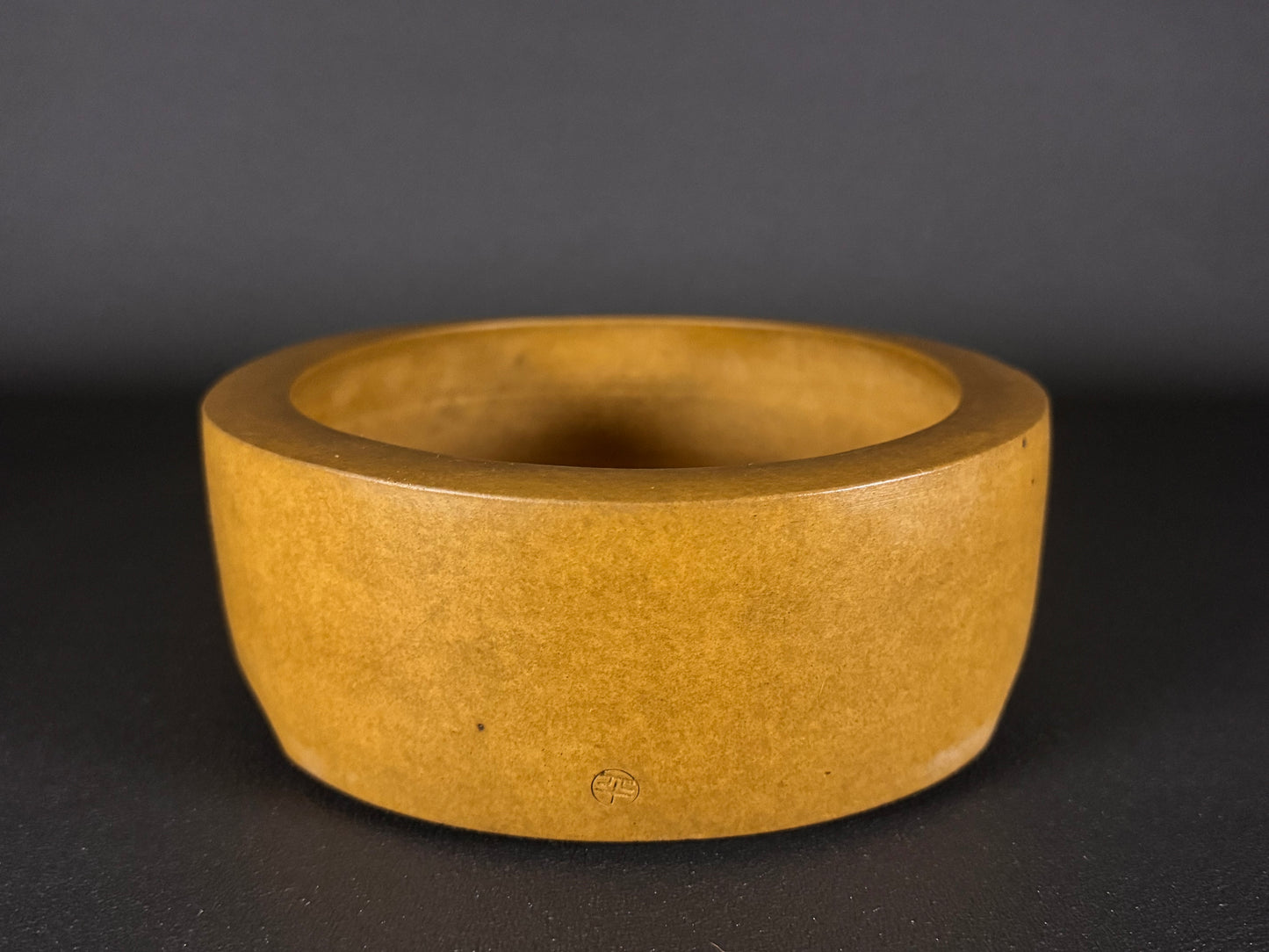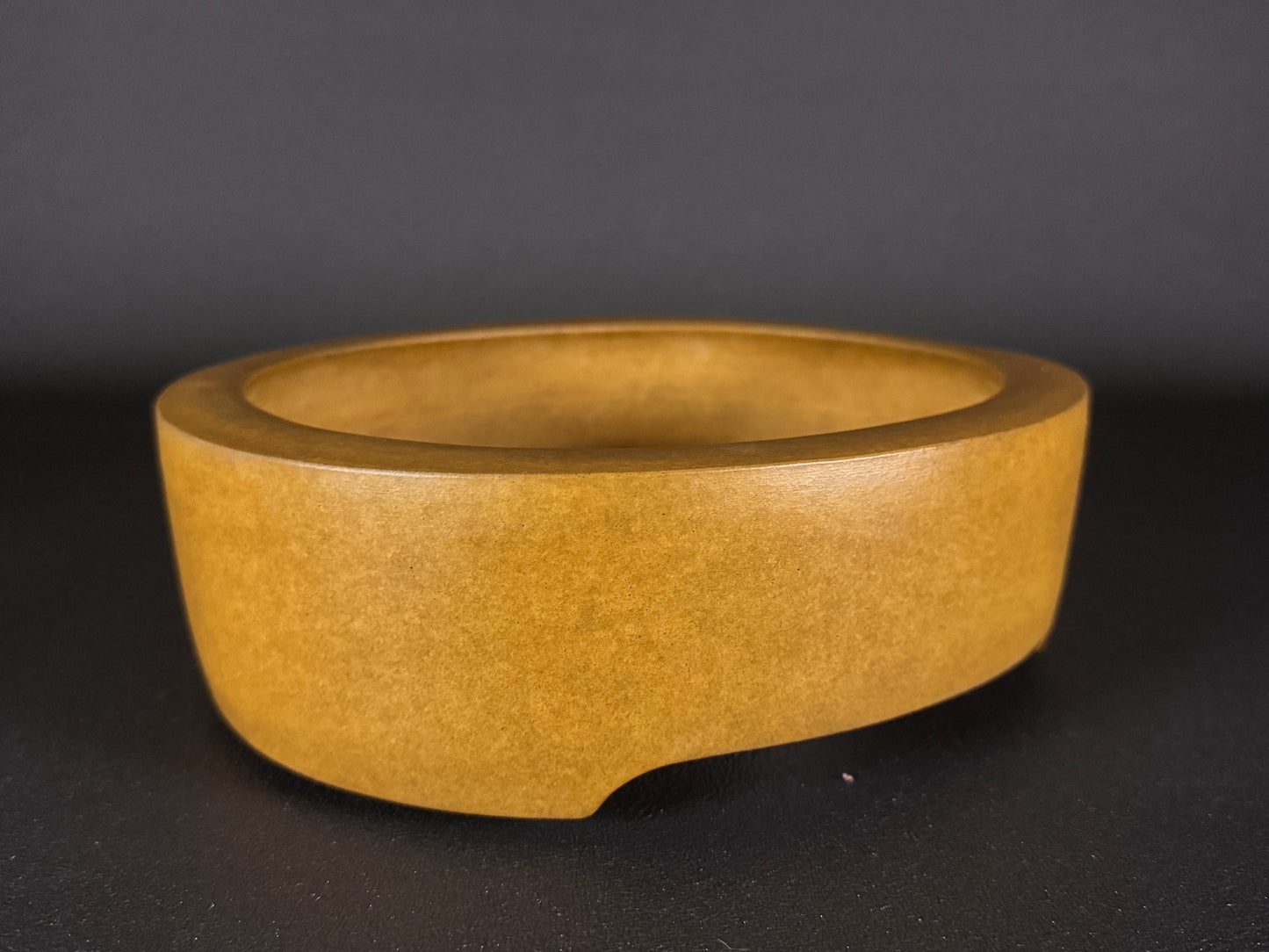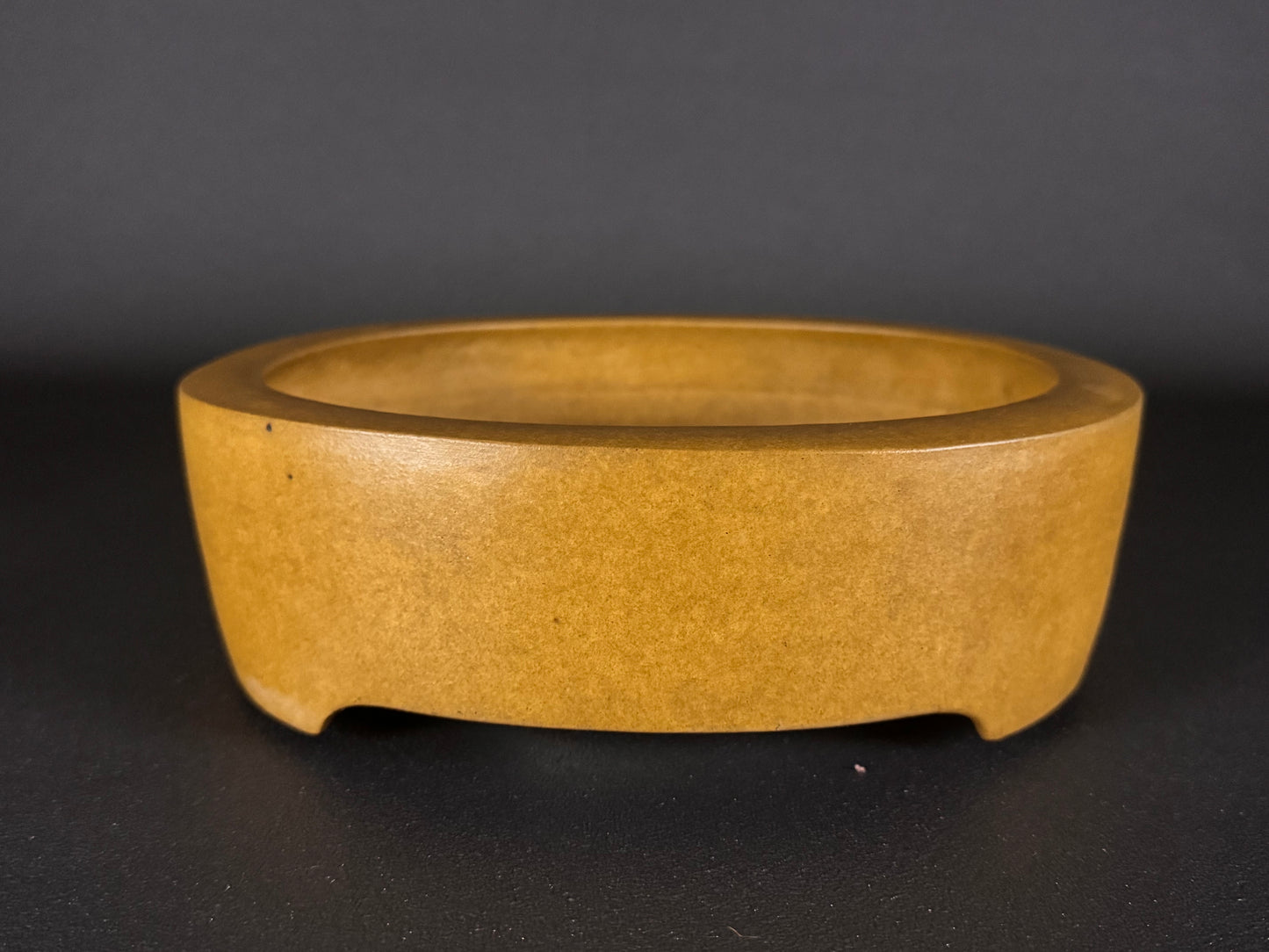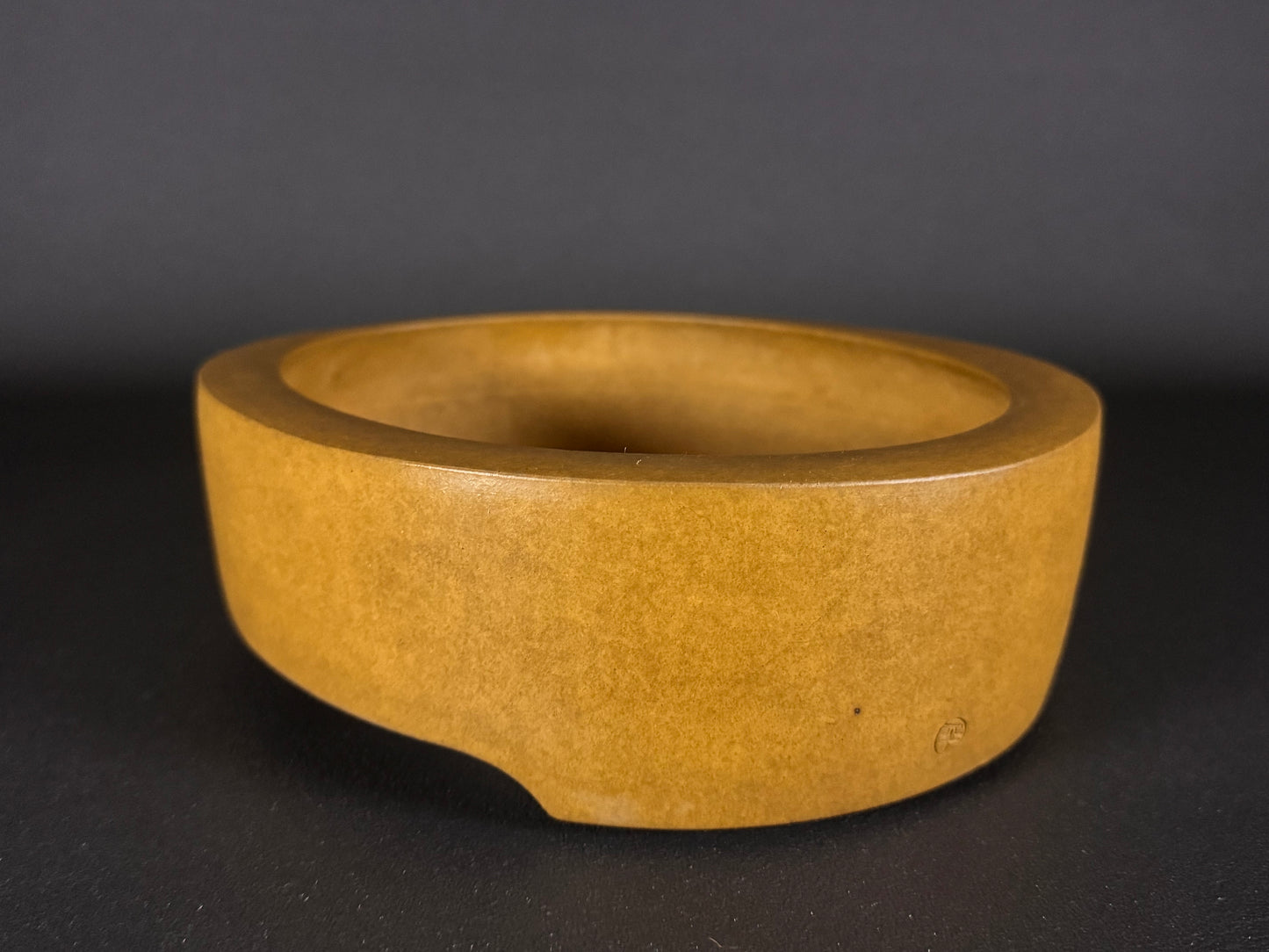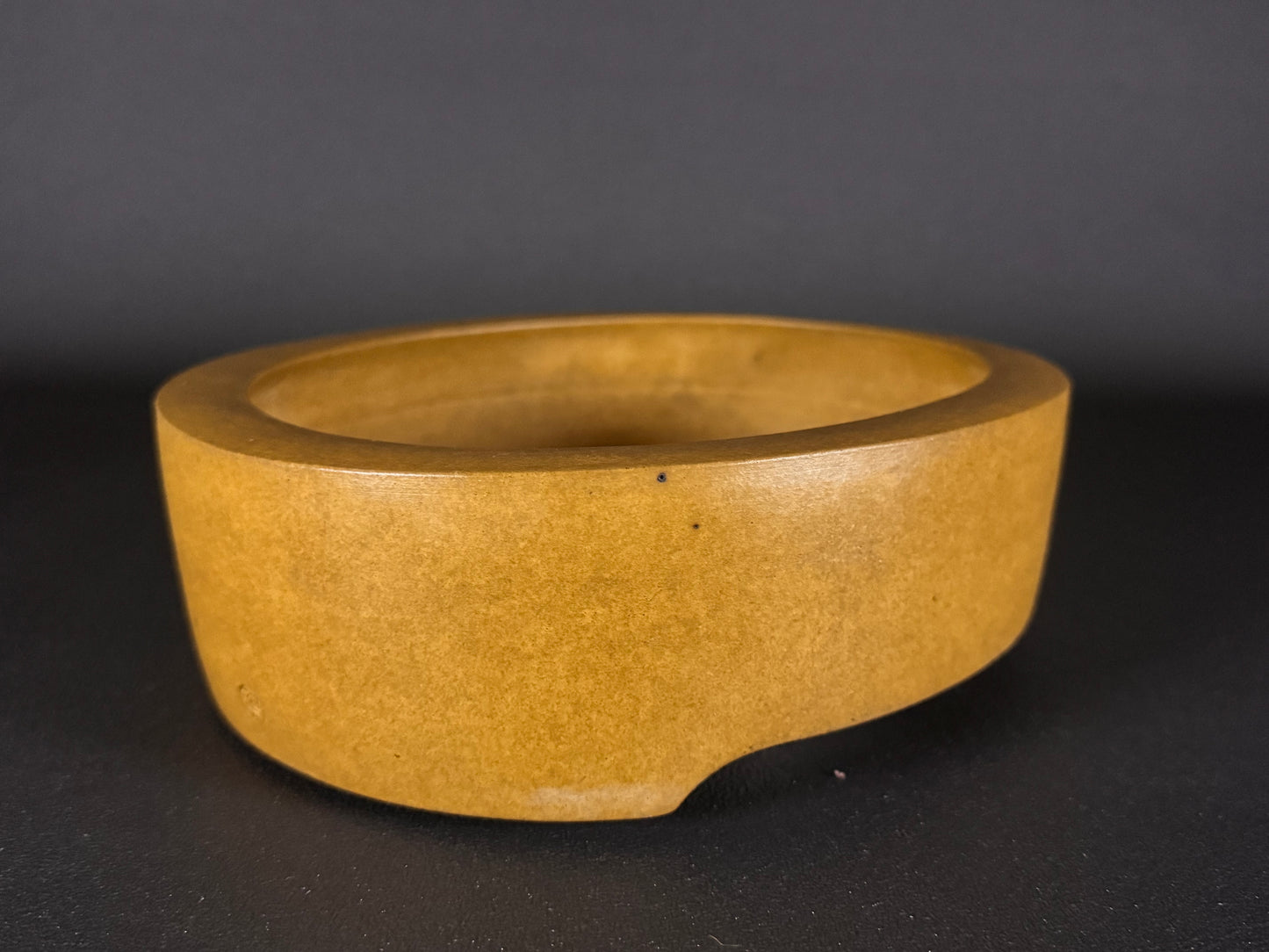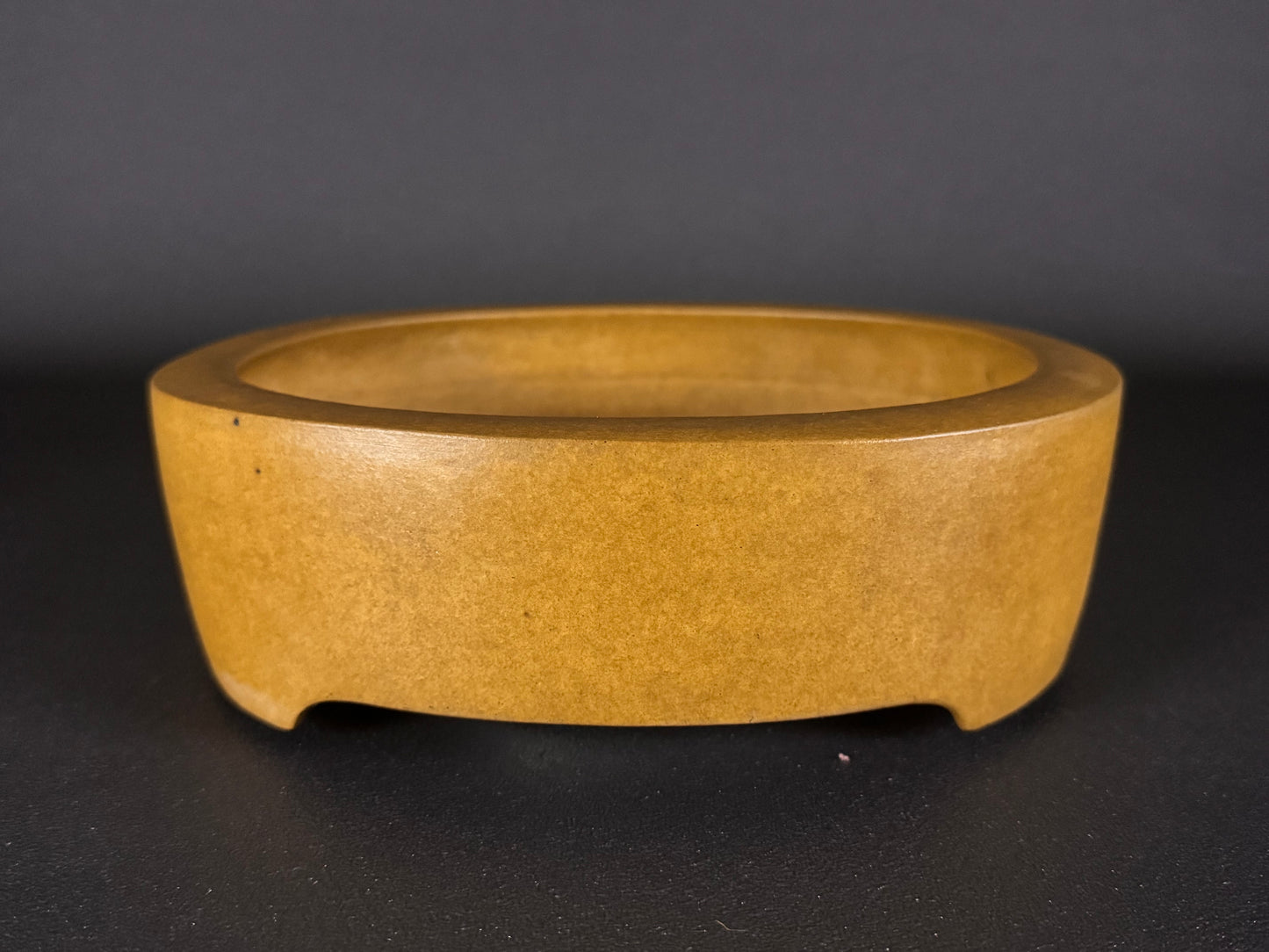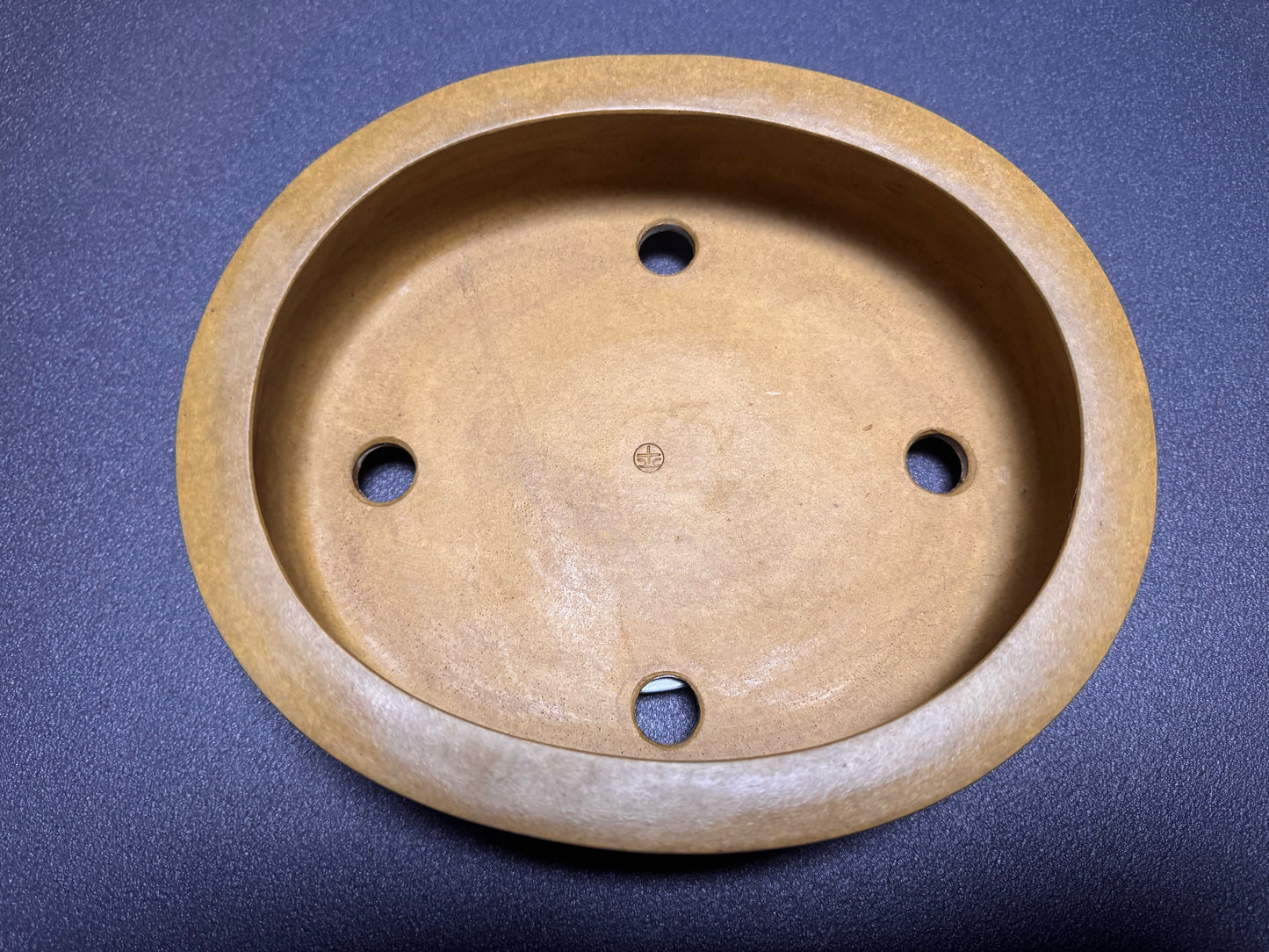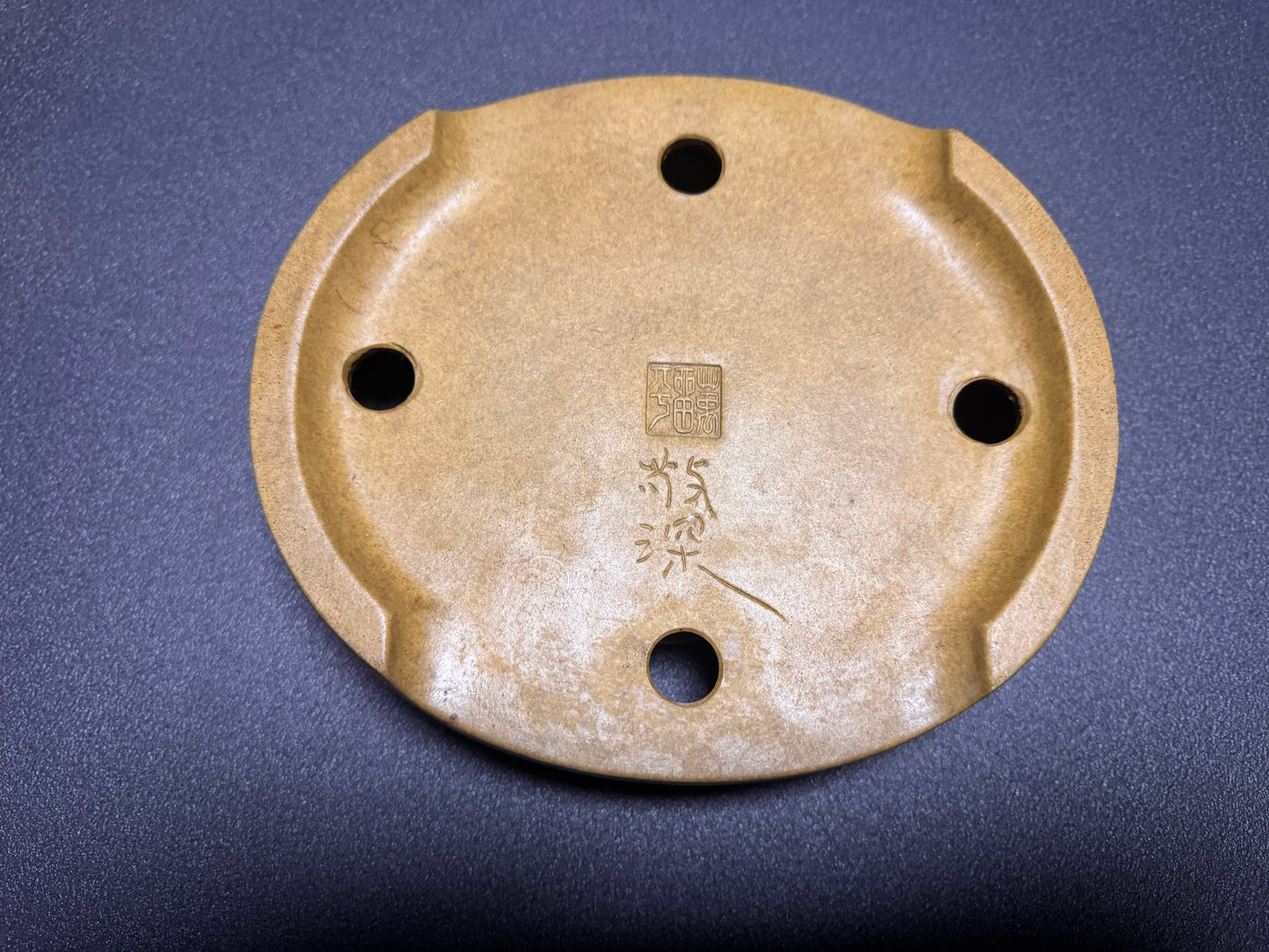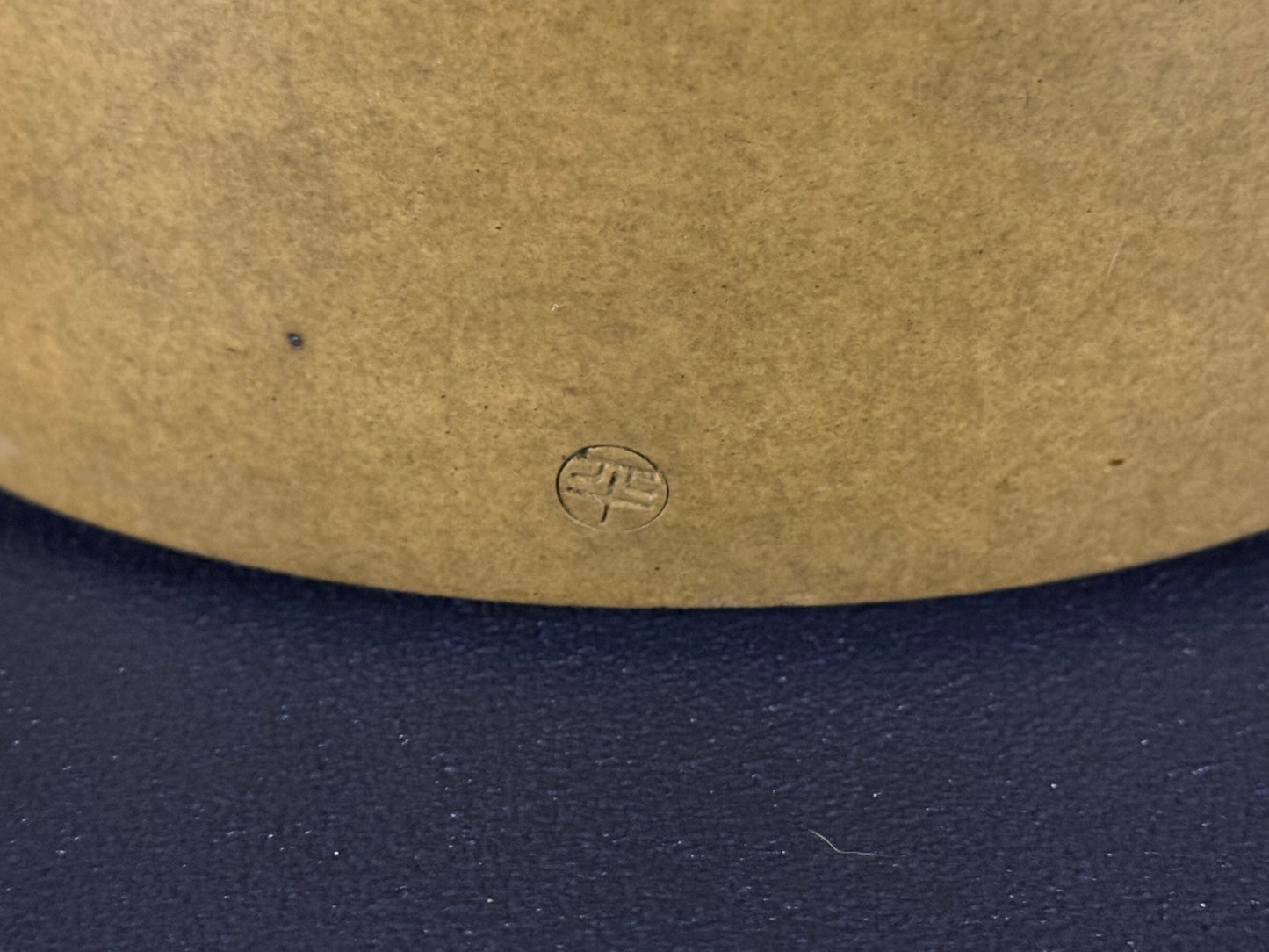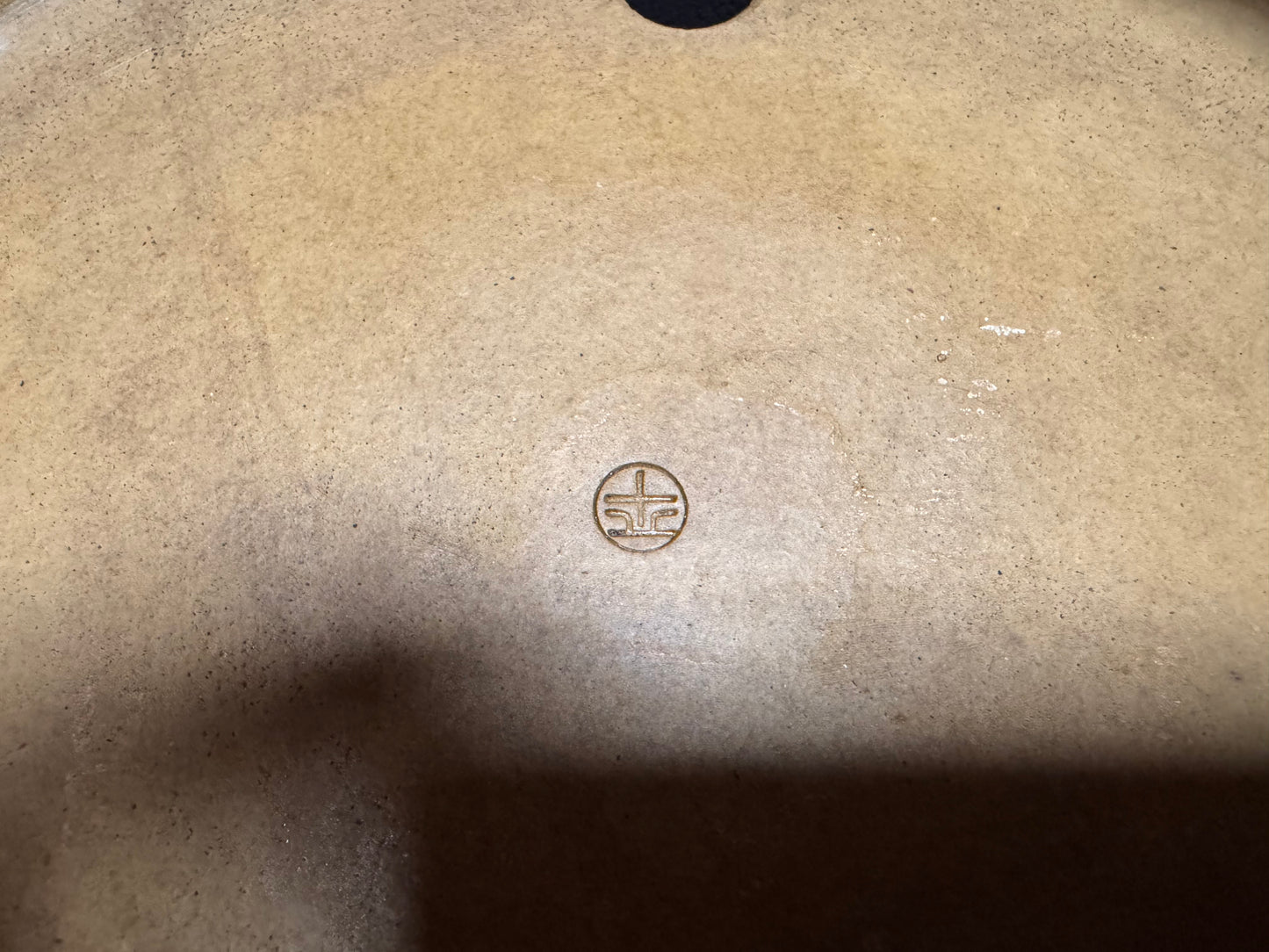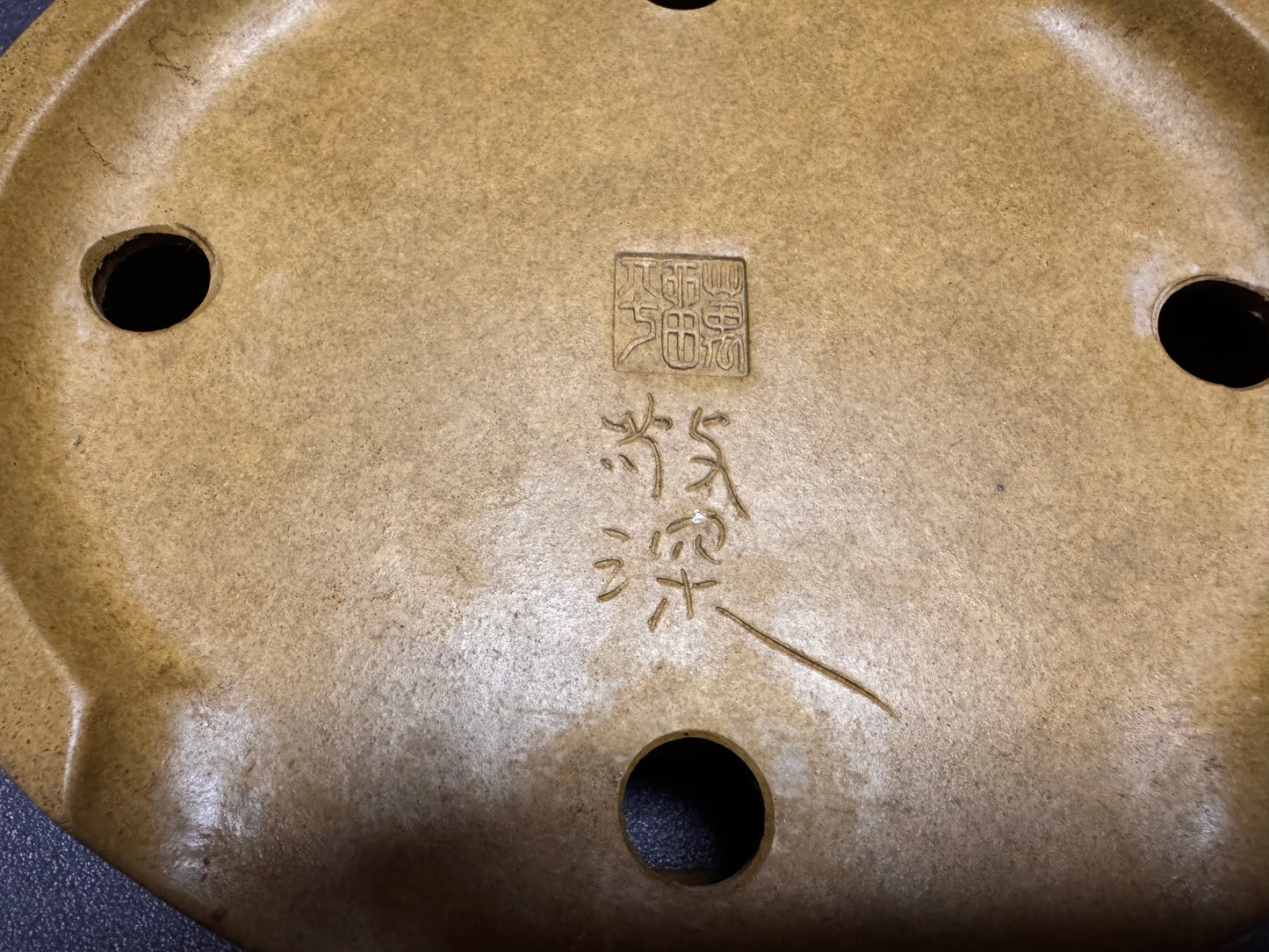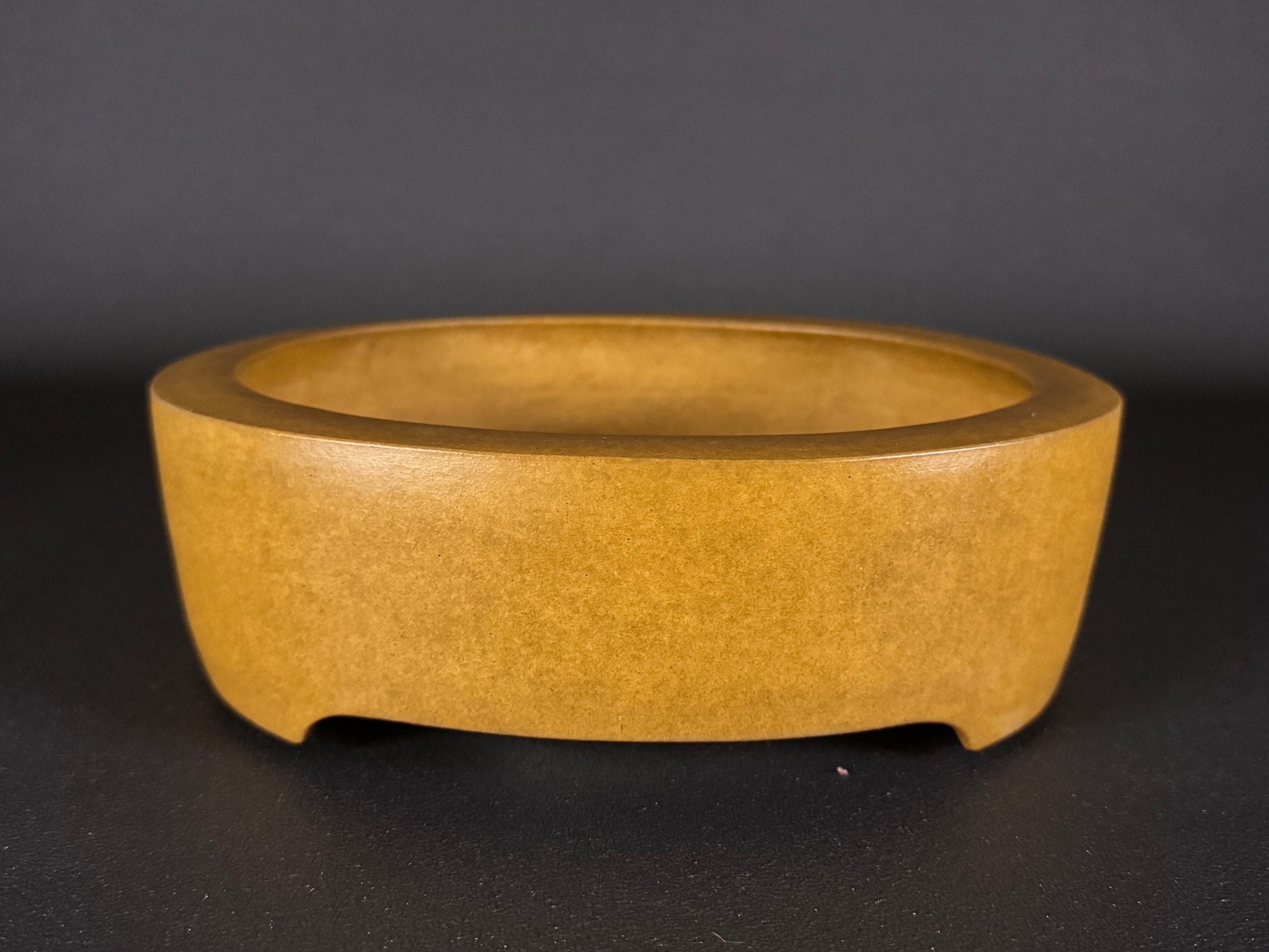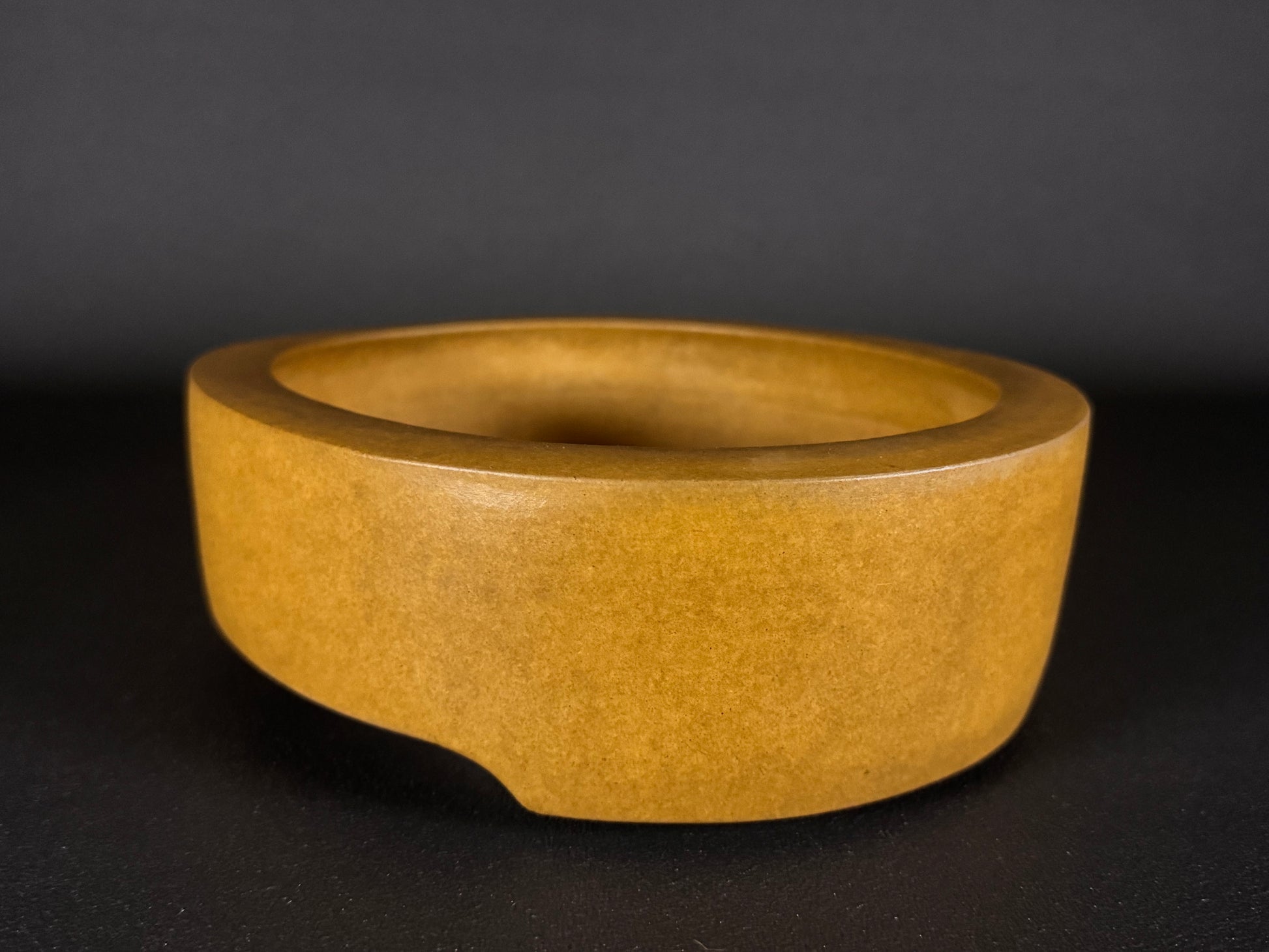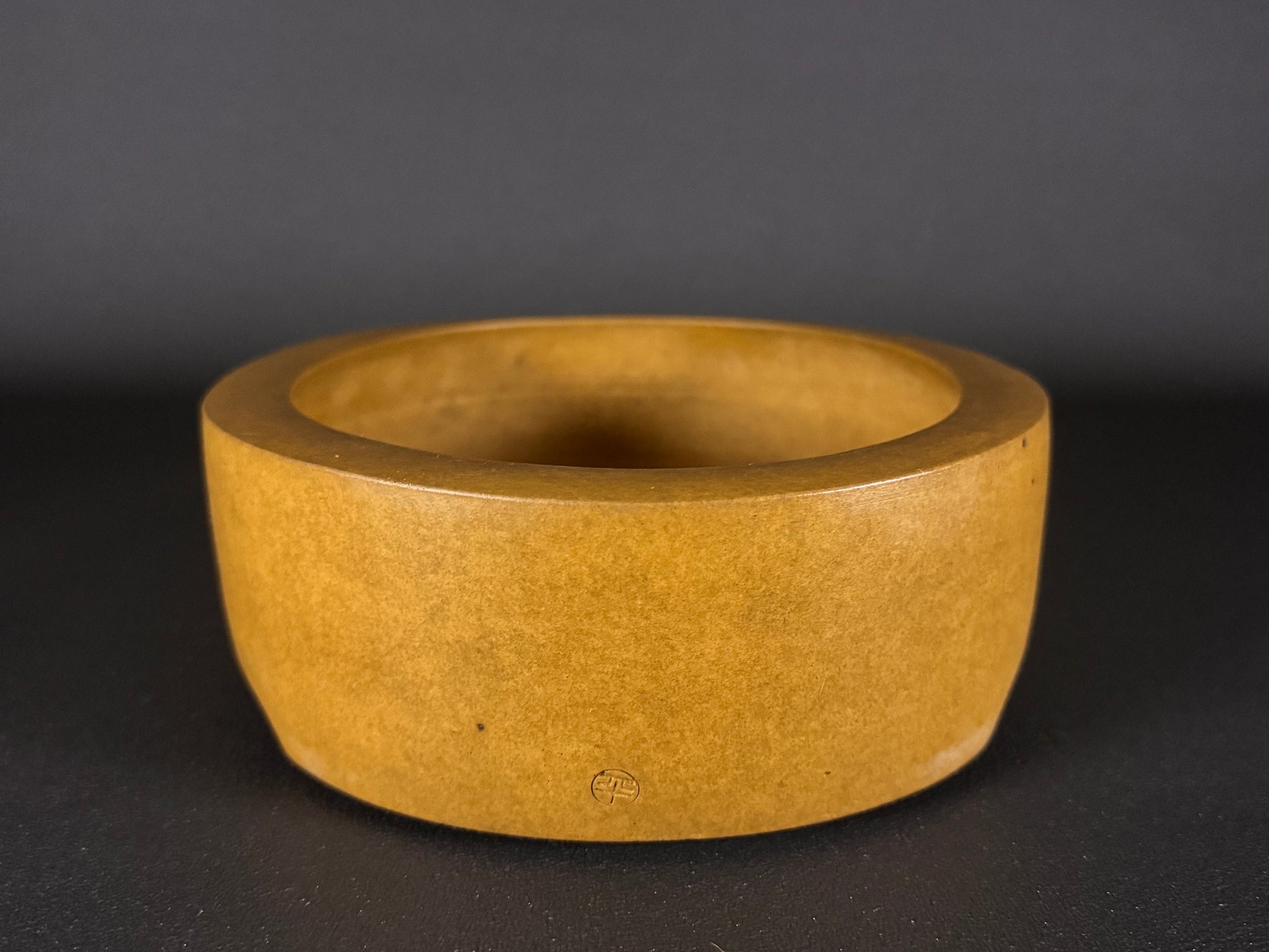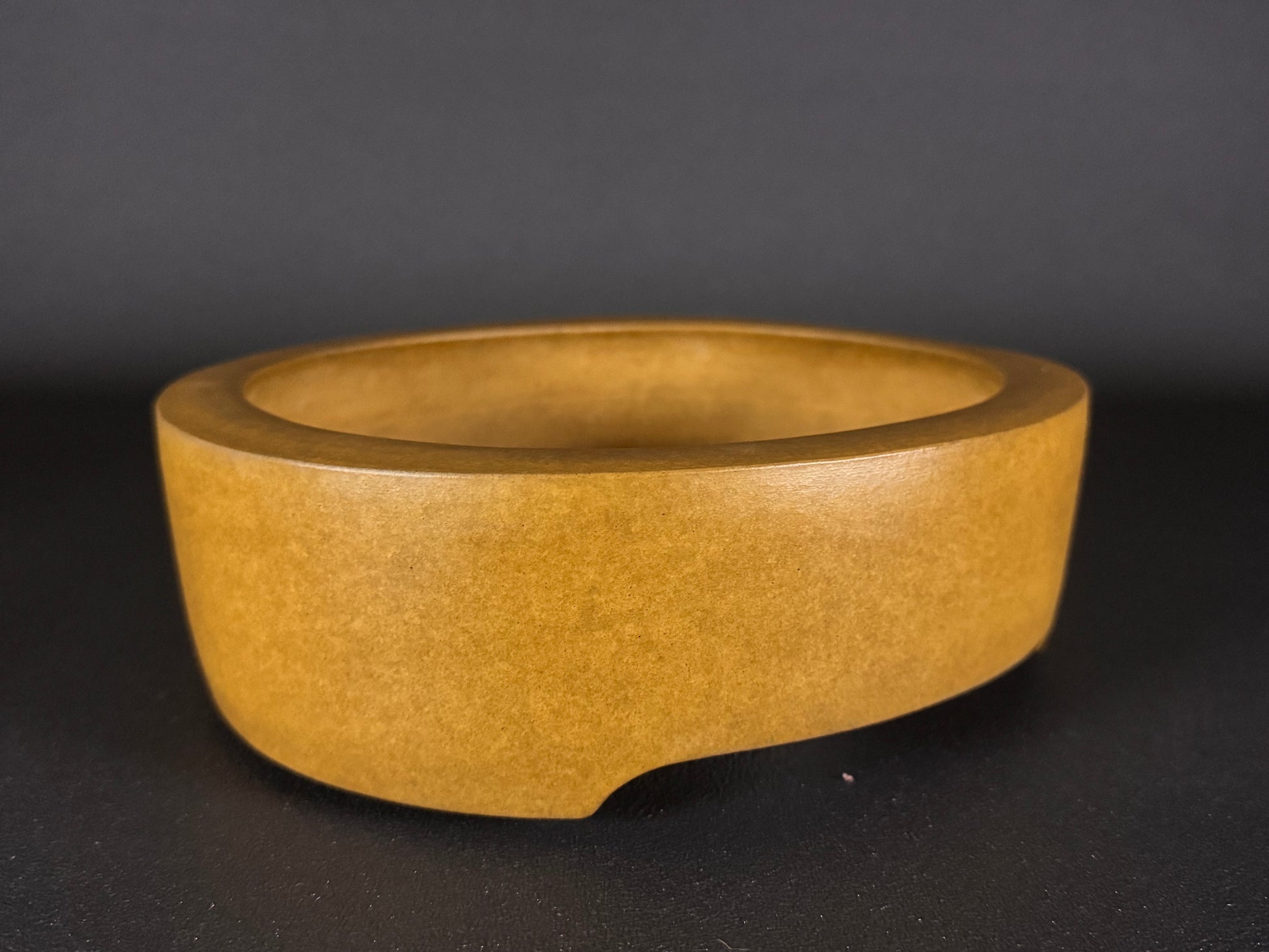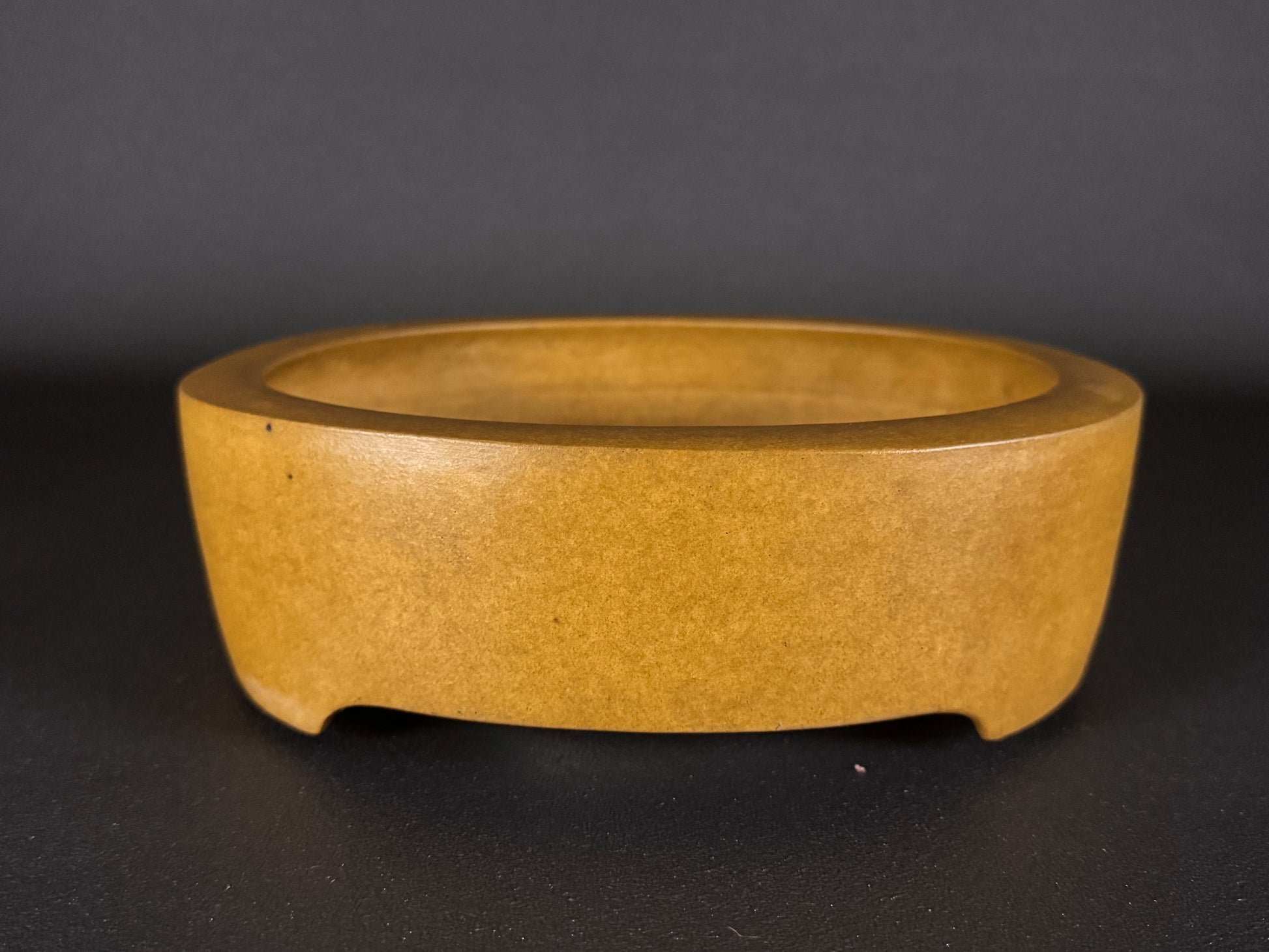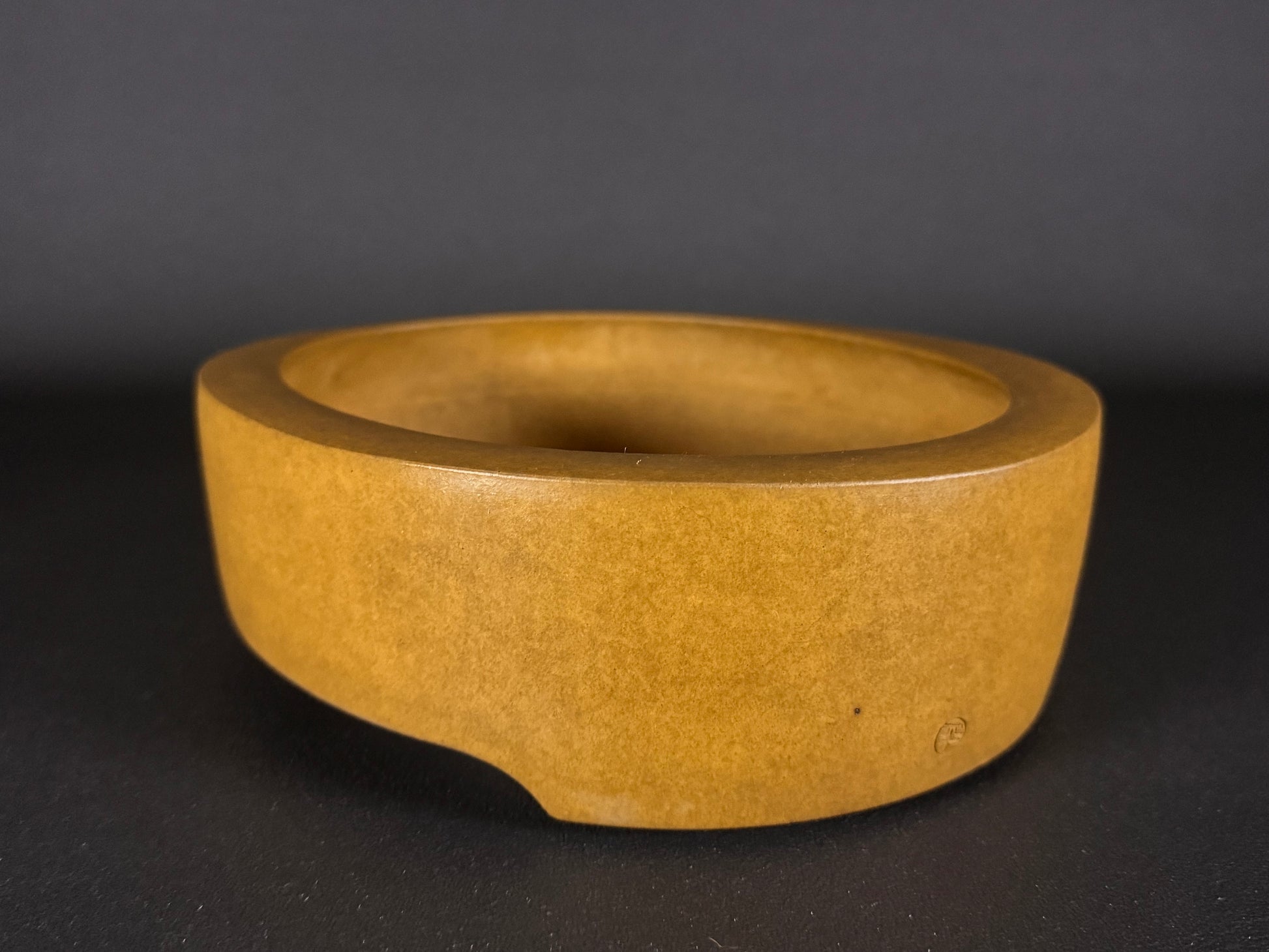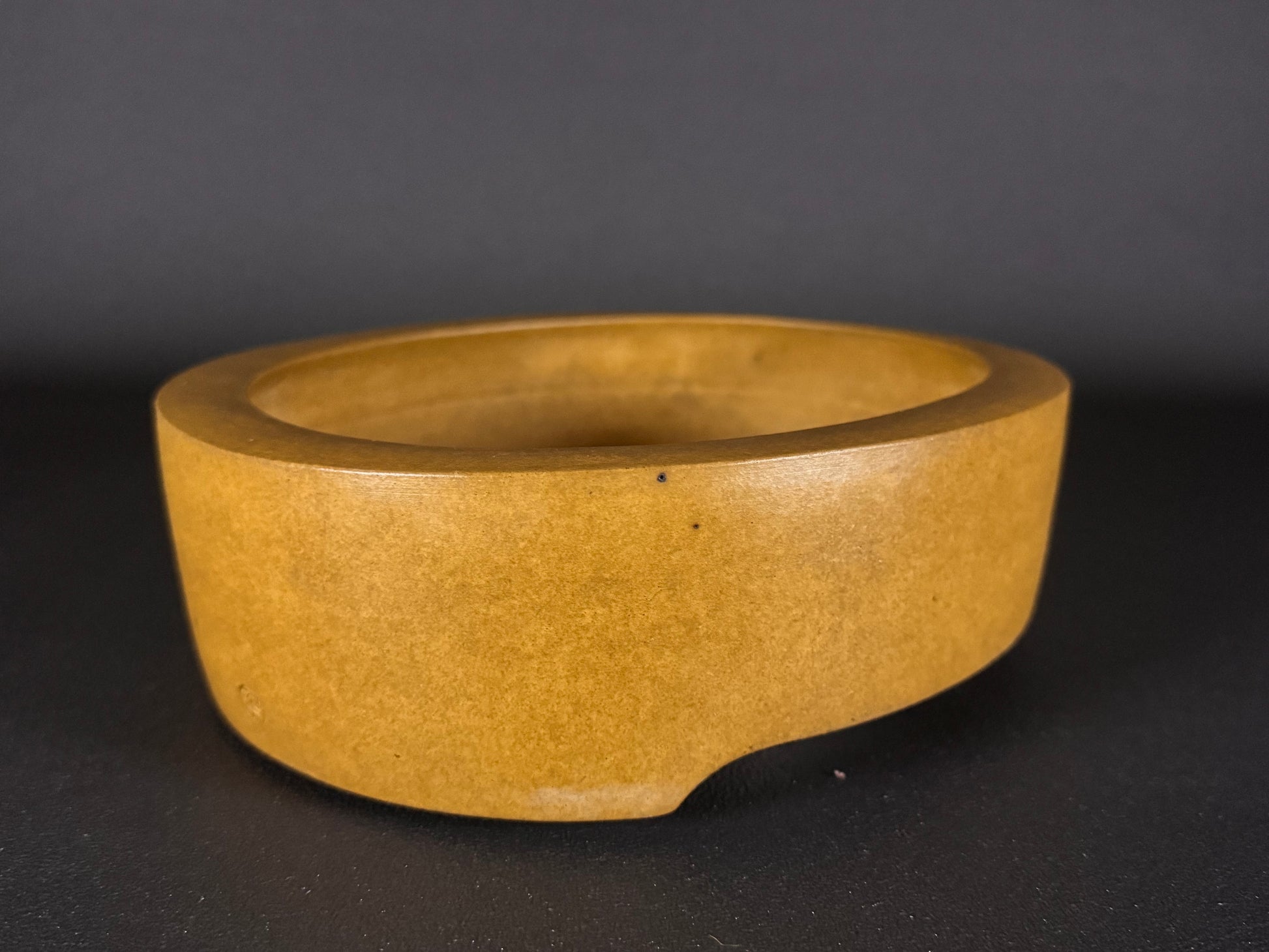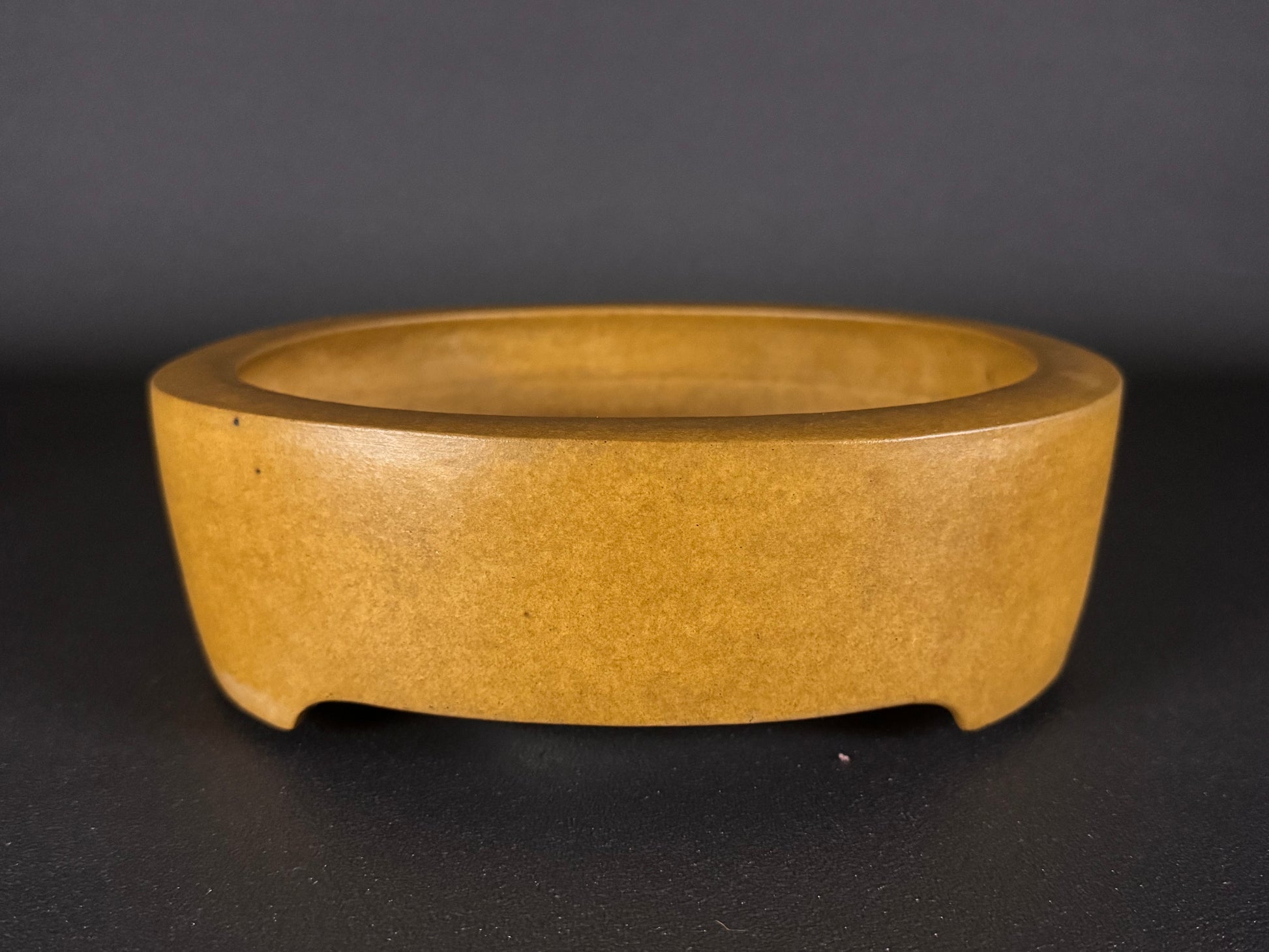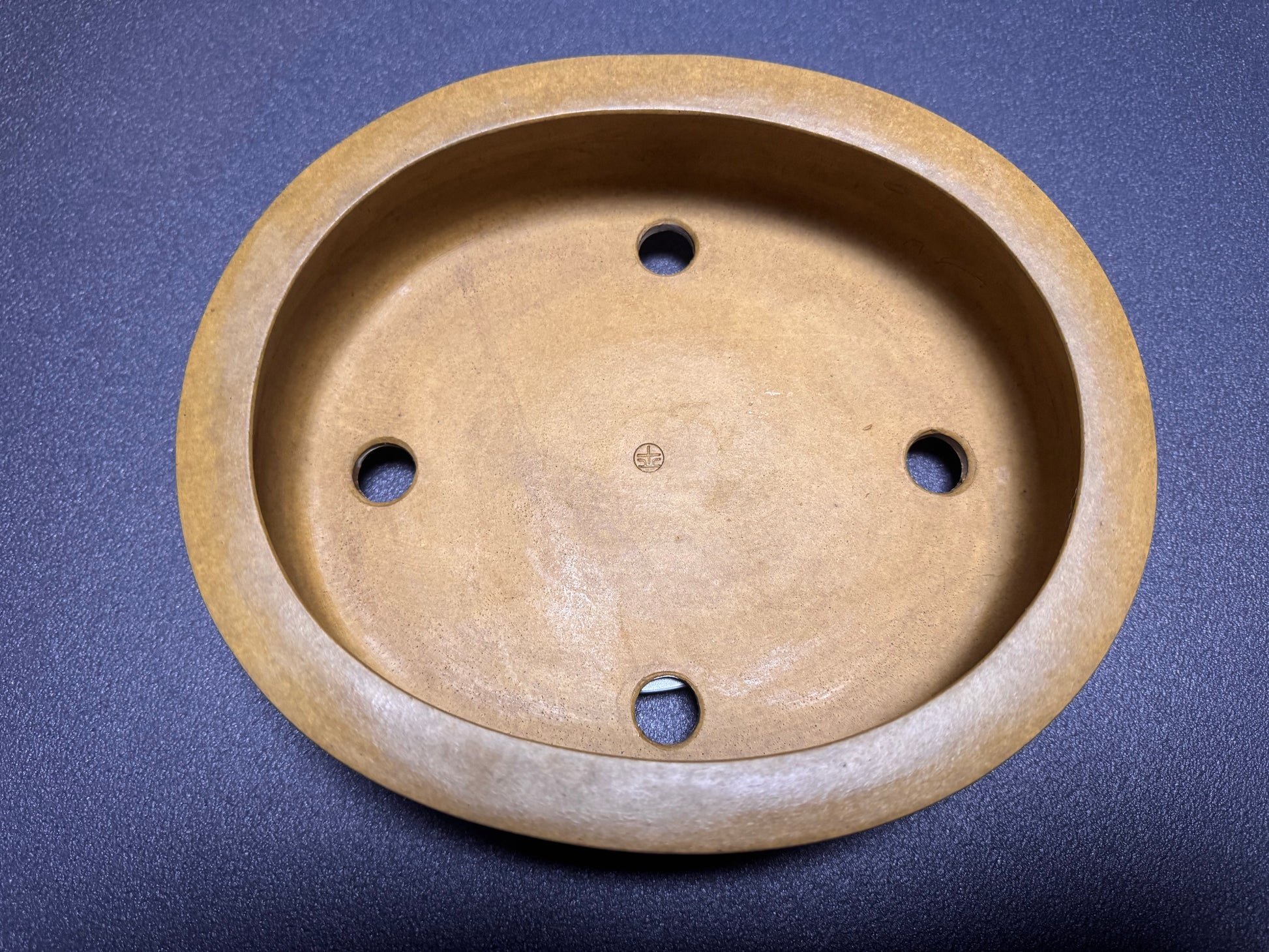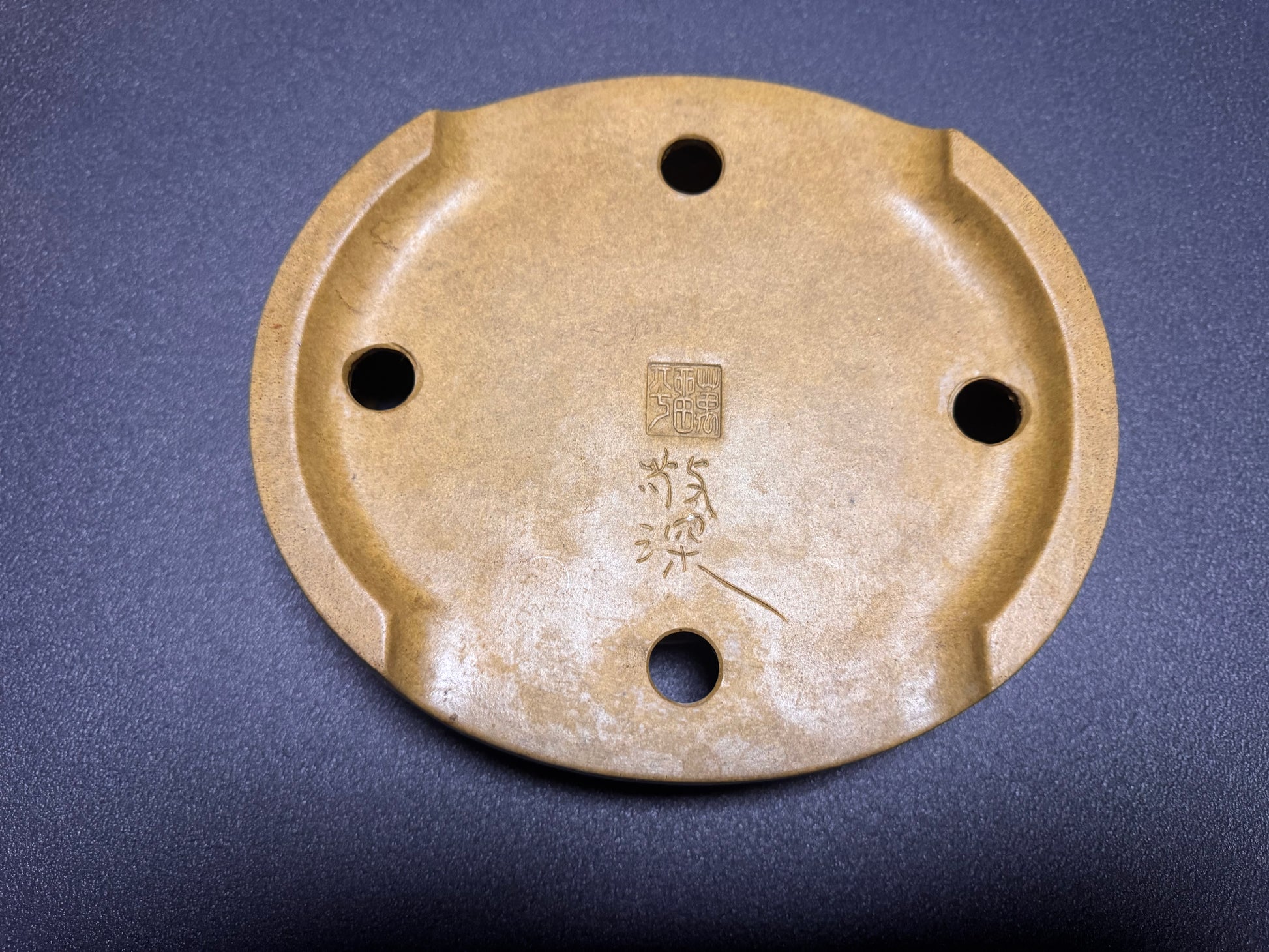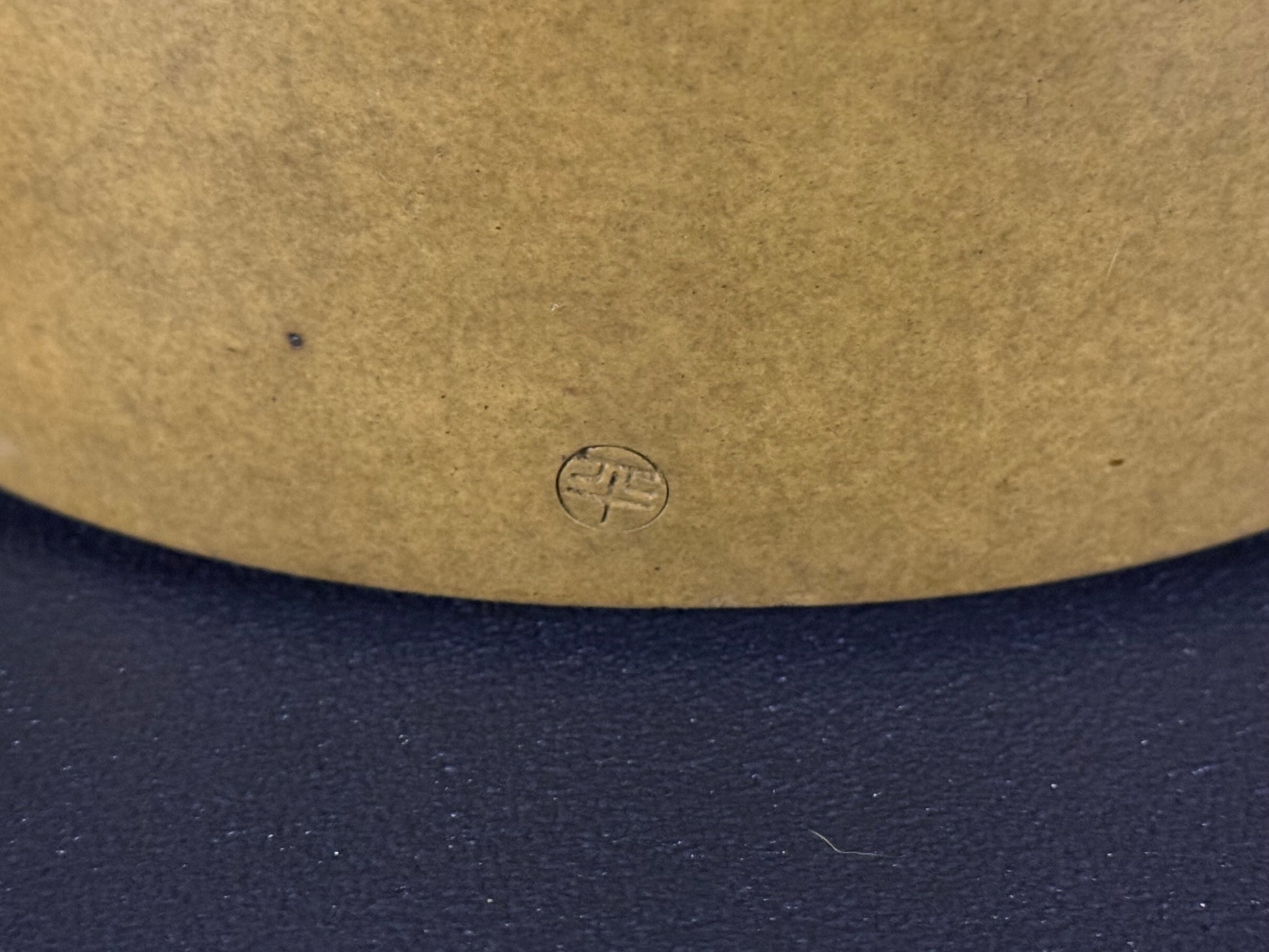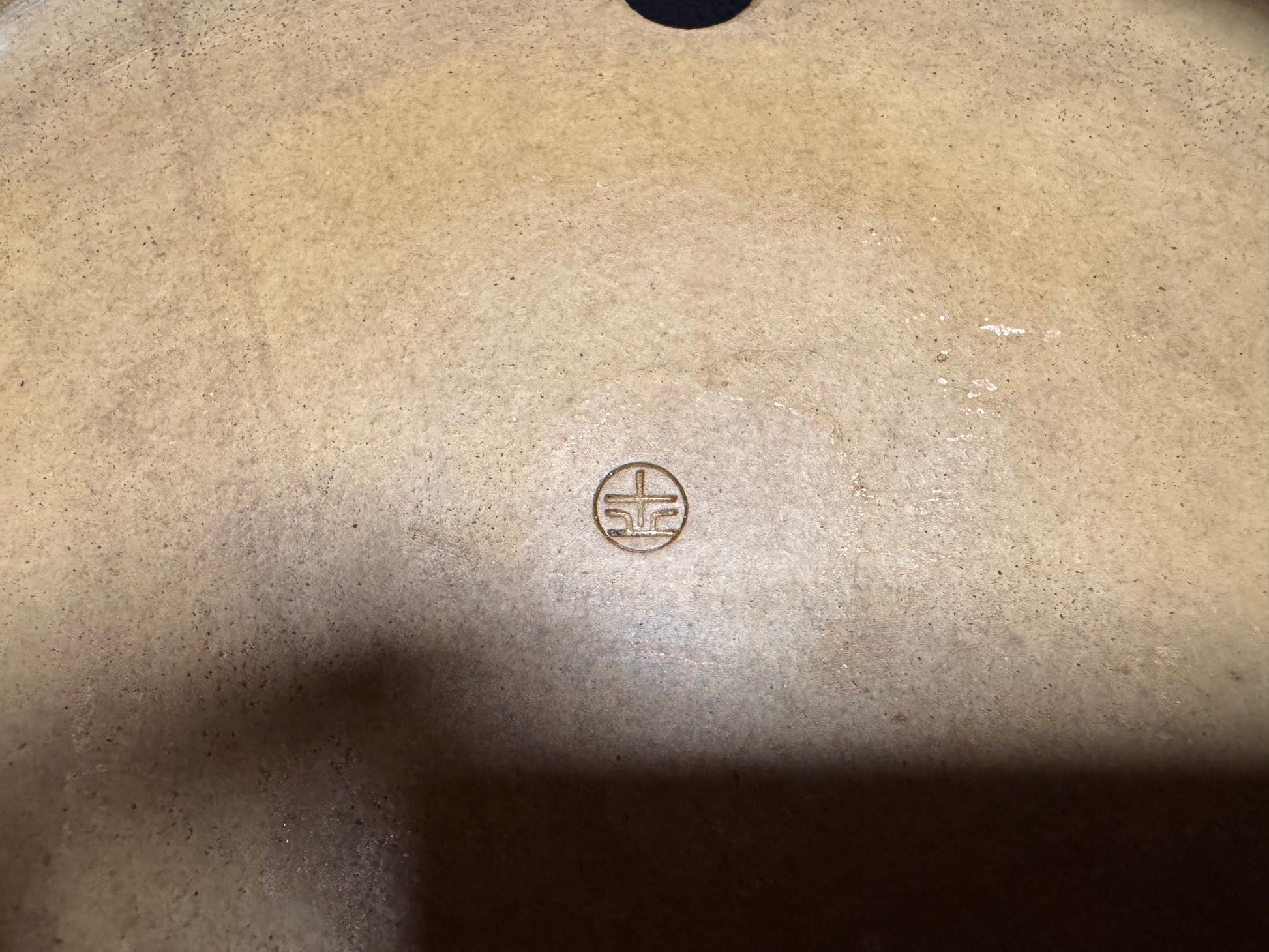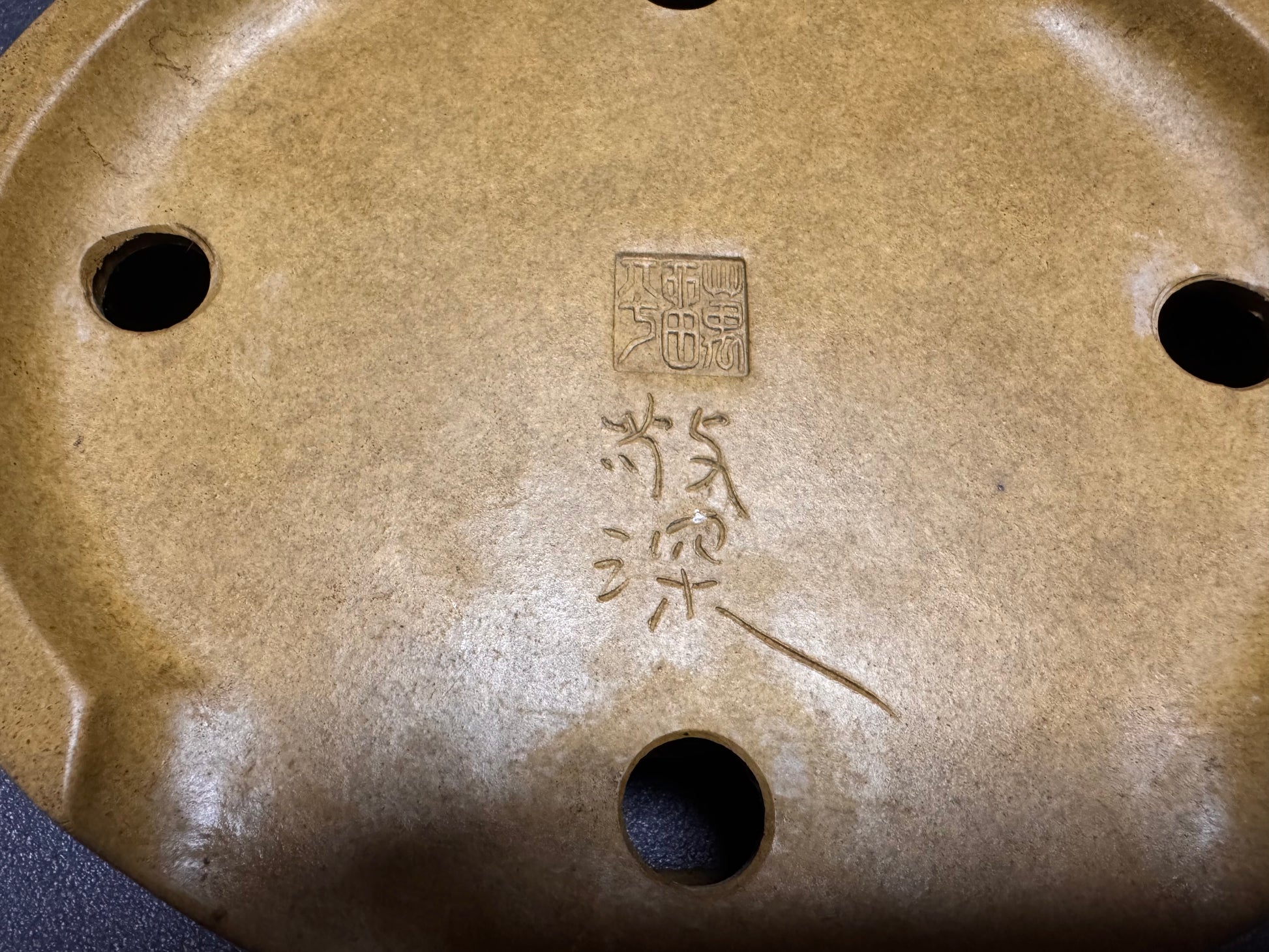Sugi Bonsai
MARUHEI, Tokoname, 22cm Oval pot Not for Sale
MARUHEI, Tokoname, 22cm Oval pot Not for Sale
Couldn't load pickup availability
Maruhei, Tokoname, Oval, Unglazed 22cm
Product Details: Not for Sale!
Region: Tokoname 常滑市
Kiln: Maruhei
Potter: Watanabe Kei (Yuushu Kenishing Maruhei)
A straightforward Japanese Shohin oval design, unglazed, that has been crafted to perfection, from the light clay, internal deep rim, integrated curved feet, it just gives a look and feel of a very strong and well-balanced, structured pot.
The pot has been stamped with two small circular seals, one on the side, and inside the pot, at the base, we find both his main seal and hand-nail signature.
External dimensions: 22.0 x 18.8 x 6.6cm
Maruhei was a Japanese bonsai potter, specifically known for his work in Tokoname, a region renowned for its pottery. He was a master craftsman, and his kilns were active until the second decade of the 21st century. Maruhei's bonsai pots are characterised by their quality and craftsmanship, with both glazed and unglazed options available. He used various chop marks to identify his work, sometimes using a circle (Maru) and the kanji for Hei. While his pots are highly sought after, some variations exist in his designs, possibly due to personal preferences or custom orders.
Elaboration:
· Tokoname Pottery:
Maruhei's work is deeply connected to the city of Tokoname, one of Japan's "six old kilns" known for its clay and pottery traditions. Tokoname clay is known for its smooth texture, which is ideal for creating bonsai pots.
· Master Craftsman:
Watanabe Kei, also known as Yuushu Keishin Maruhei, was appointed master craftsman in Tokoname, highlighting his skill and reputation.
· Chop Marks:
Maruhei used distinct chop marks to identify his work, often featuring a circle (Maru) and the kanji for Hei. There are variations in these chop marks, and some pots may have different chop marks on the bottom or side.
· Variations in Design:
Maruhei's pots exhibit some variations in design, such as different feet styles (straight or cloud feet), which may be due to personal preferences or specific requests from customers.
· Legacy:
Maruhei's kilns remained active until the early 21st century, indicating a long and productive career. The legacy of Tokoname potters, including Maruhei, is preserved through the work of fourth and fifth-generation artists continuing the tradition
Share
